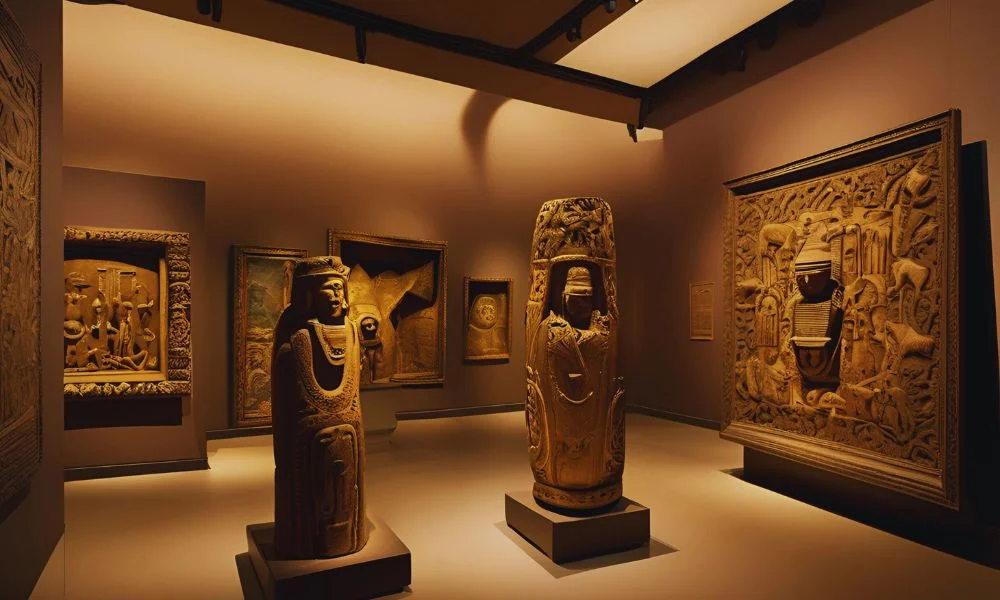Ancient Artz: The Timeless Echoes of Civilization
Ancient art isn’t merely a collection of artifacts; it’s a vibrant narrative that tells the story of our past, bridging the gap between today and the lives of those who came before us. Each piece, whether a delicate ceramic from China or a monumental statue from Egypt, speaks volumes about the beliefs, aspirations, and cultures that shaped the world. In exploring “ancient artz,” we engage with a rich tapestry of history that continues to inspire modern creativity and thought.
Legacy
The legacy of ancient art can be seen in the intricate carvings of Egyptian tombs, the awe-inspiring structures of Mesopotamia, and the stunning pottery of the Chinese dynasties. These works are not just relics; they are echoes of societies that have shaped our understanding of aesthetics and functionality. They reflect the values, struggles, and achievements of civilizations, providing us with insights into their daily lives, spiritual beliefs, and social structures.
Egypt
Consider the detailed carvings found in the tombs of ancient Egypt. These were not merely decorative; they served a purpose, meant to accompany the deceased in the afterlife. Hieroglyphics tell stories of gods, pharaohs, and the journey beyond death. The precision and artistry involved in creating these works demonstrate the Egyptians’ profound belief in the afterlife, reflecting their values and the importance of the afterlife in their society. Even today, these carvings inspire awe and fascination, reminding us of a time when art was deeply intertwined with spirituality and daily life.
Mesopotamia
Similarly, Mesopotamia gave us the ziggurat, a towering structure that showcased the architectural ingenuity of the Sumerians, Akkadians, and Babylonians. These stepped structures served religious purposes, connecting the earth with the heavens. They were adorned with intricate reliefs and pottery that depicted deities and daily life. The art of this region was marked by a focus on storytelling, using form and texture to convey complex narratives that would educate and engage those who encountered them.
China
In ancient China, ceramics played a vital role, with dynasties like the Han and Tang producing some of the most exquisite pieces. The development of porcelain, for example, revolutionized art and trade. These ceramics were not just for utility; they were often elaborately decorated, showcasing themes from nature, mythology, and daily life. The craftsmanship displayed in these works speaks to the cultural importance placed on art as a means of communication and expression.
Influence
The influence of ancient art extends beyond historical significance; it has a lasting impact on modern art, design, and architecture. Many contemporary artists draw inspiration from these ancient techniques and themes, blending them with modern practices to create works that resonate with today’s audiences.
Inspiration
Artists today often look to the past to inform their work. The use of vibrant colors, intricate patterns, and symbolic imagery in ancient art can be seen in various contemporary movements. For instance, the vibrant colors and motifs of African tribal art can inspire modern textile designs and graphic arts. This continuous thread of inspiration highlights how ancient art remains relevant, shaping our visual language and cultural expressions.
Design
In the realm of architecture, we see a revival of ancient styles in modern buildings. The use of columns reminiscent of Greek and Roman designs, the incorporation of motifs from ancient cultures, and the adaptation of sacred geometries showcase how ancient art continues to influence how we build and design spaces. This melding of old and new creates environments that honor historical significance while addressing contemporary needs.
Connection
Engaging with ancient art allows us to connect with our shared human experience. The themes of love, death, spirituality, and everyday life depicted in these works resonate with us today, bridging the gap between ancient civilizations and our current lives.
Shared Humanity
When we view a piece of ancient art, we’re not just looking at a decorative object; we’re encountering the thoughts, dreams, and fears of people who lived thousands of years ago. Their stories are our stories, and by understanding their art, we can gain insights into our own humanity. This connection fosters a deeper appreciation for cultural diversity and the myriad ways in which human beings express their existence.
Dialogue
Furthermore, ancient art sparks dialogue about cultural identity, heritage, and preservation. As we face a rapidly changing world, the lessons embedded in ancient art remind us of the importance of honoring our roots. Preservation efforts for ancient artifacts highlight the need to protect our cultural heritage for future generations, allowing them to engage with and learn from the past.
Interpretation
Interpreting ancient art can be a complex endeavor. The meanings behind symbols, styles, and techniques can vary widely across different cultures and time periods. Art historians and archaeologists dedicate their careers to uncovering these meanings, piecing together the narratives that ancient artists sought to convey.
Symbolism
Take, for example, the use of animals in ancient art. In many cultures, animals were imbued with symbolic meaning. The lion often represented strength and courage, while the owl was associated with wisdom. Understanding these symbols can enrich our appreciation of the artwork and the context in which it was created. It also emphasizes the universality of certain themes, such as the reverence for nature and the animal kingdom, that transcends time and place.
Techniques
The techniques used by ancient artists also merit examination. From the frescoes of Pompeii to the pottery of ancient Greece, the methods of creation reveal much about the materials, resources, and skills available at the time. These techniques were often passed down through generations, creating a lineage of craftsmanship that is still celebrated today. Learning about these methods can inspire modern artists to explore traditional techniques, fostering a greater appreciation for the art-making process.
Preservation
As we explore the world of ancient artz, we must also consider the importance of preservation. Many ancient artworks and artifacts face threats from environmental changes, urban development, and neglect. Museums and cultural institutions play a crucial role in protecting these treasures, ensuring they are preserved for future generations to study and appreciate.
Conservation
Conservation efforts are essential in maintaining the integrity of ancient art. Experts employ various techniques to restore and protect these works, using methods that respect the original materials and artistic intentions. This ongoing work highlights the value we place on our cultural heritage and the need to safeguard it in an ever-changing world.
Conclusion
Ancient artz is more than just an exploration of aesthetics; it’s a journey into the heart of human experience. By engaging with the stories, techniques, and influences of ancient civilizations, we find connections that enrich our understanding of ourselves and our world. These timeless echoes of the past continue to inspire and challenge us, reminding us that art is a powerful medium for communication, reflection, and growth. So, let us celebrate and protect this rich heritage, ensuring that the narratives of our ancestors continue to resonate in the lives of future generations.






